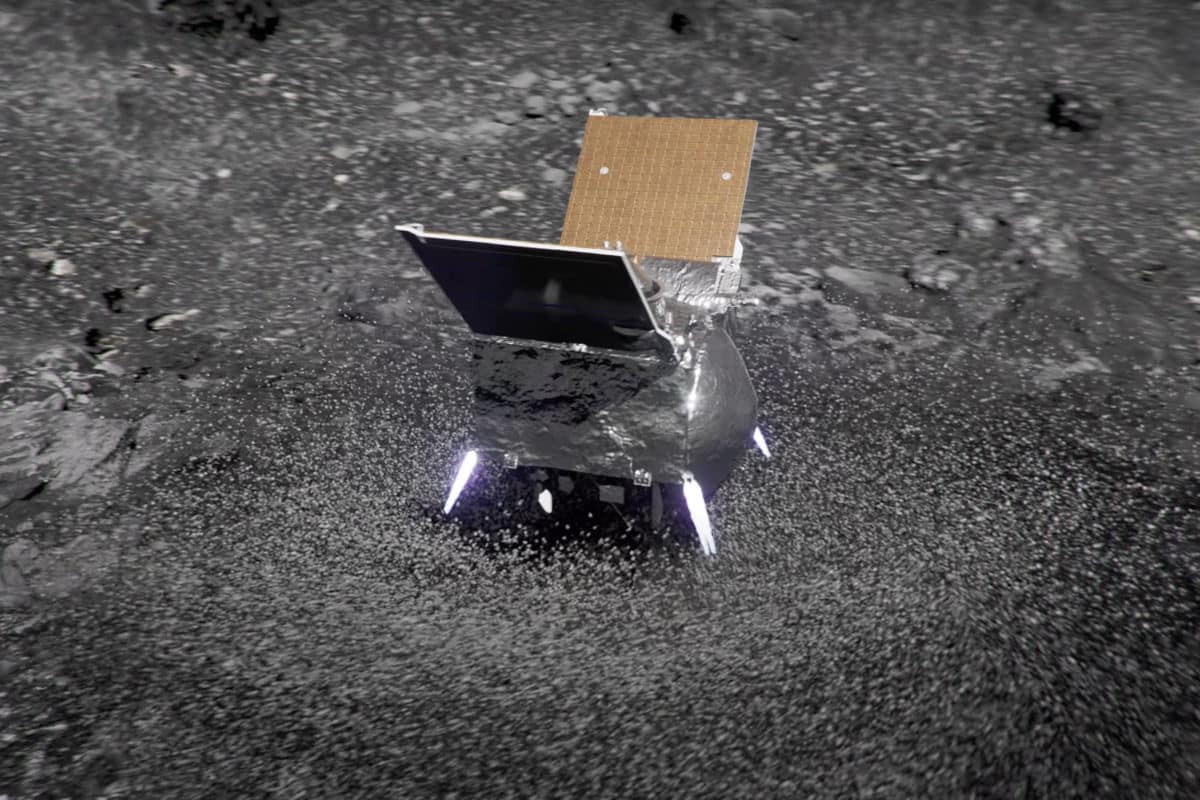

The boulders that make up the surface of asteroid Bennu barely stick together, new research shows.
The asteroid Bennu continues to amaze. Earlier, NASA’s spacecraft OSIRIS-REx already found water on the small space rock, which also turned out to be older than thought and is spinning faster and faster. Furthermore, the surface of Bennu is not a smooth sandy plain, as scientists had previously expected, but is rough and strewn with stones.
Moreover, it now appears that the stones do not ‘stick together’, but form a kind of ball pit. And that’s where OSIRIS-REx sank a long way when the probe descended to the asteroid in October 2020 to pick up material.
Loose collection of boulders
Immediately after landing, it was clear that something strange was going on with Bennu’s surface. OSIRIS-REx was found to have left a crater 8 meters in diameter, while the probe barely made a dent in the surface in lab tests. So NASA had the spacecraft fly past the asteroid one more time, at an altitude of only a few kilometers, to take additional photos.
With before-and-after images of where OSIRIS-REx struck its crater, acceleration data from the probe itself, and hundreds of computer simulations, it’s now clear what’s going on. The upper part of the bottom of OSIRIS-REx does not form a whole, but is a loose collection of boulders held together only by Bennu’s gravity. And that gravity is less than a hundred thousandth that of the Earth.
Mini craters on Bennu
Therefore it would feel like stepping into a ball pit if you stood on Bennu, reports NASA† And so it was for OSIRIS-REx. It sank half a meter into the asteroid during its brief visit to the asteroid, until its thrusters pulled it out again.
Those thrusters also appear to have left their mark on Bennu. Around the ‘main crater’ of OSIRIS-REx itself are four mini craters. Around it is a ring of material that was thrown up by the probe.
Even more surprises
OSIRIS-REx has been on its way to Earth for a few months now, with 250 grams of Bennu material on board. If all goes well, it will be delivered here in September 2023. And then scientists can see if the asteroid has even more surprises in store for us.
Source material:
†Surprise – Again! Asteroid Bennu Reveals its Surface is Like a Plastic Ball Pit” – NASA
†Asteroid Bennu’s Surprising Surface Revealed by NASA Spacecraft” – NASA on YouTube
Image at the top of this article: NASA Goddard